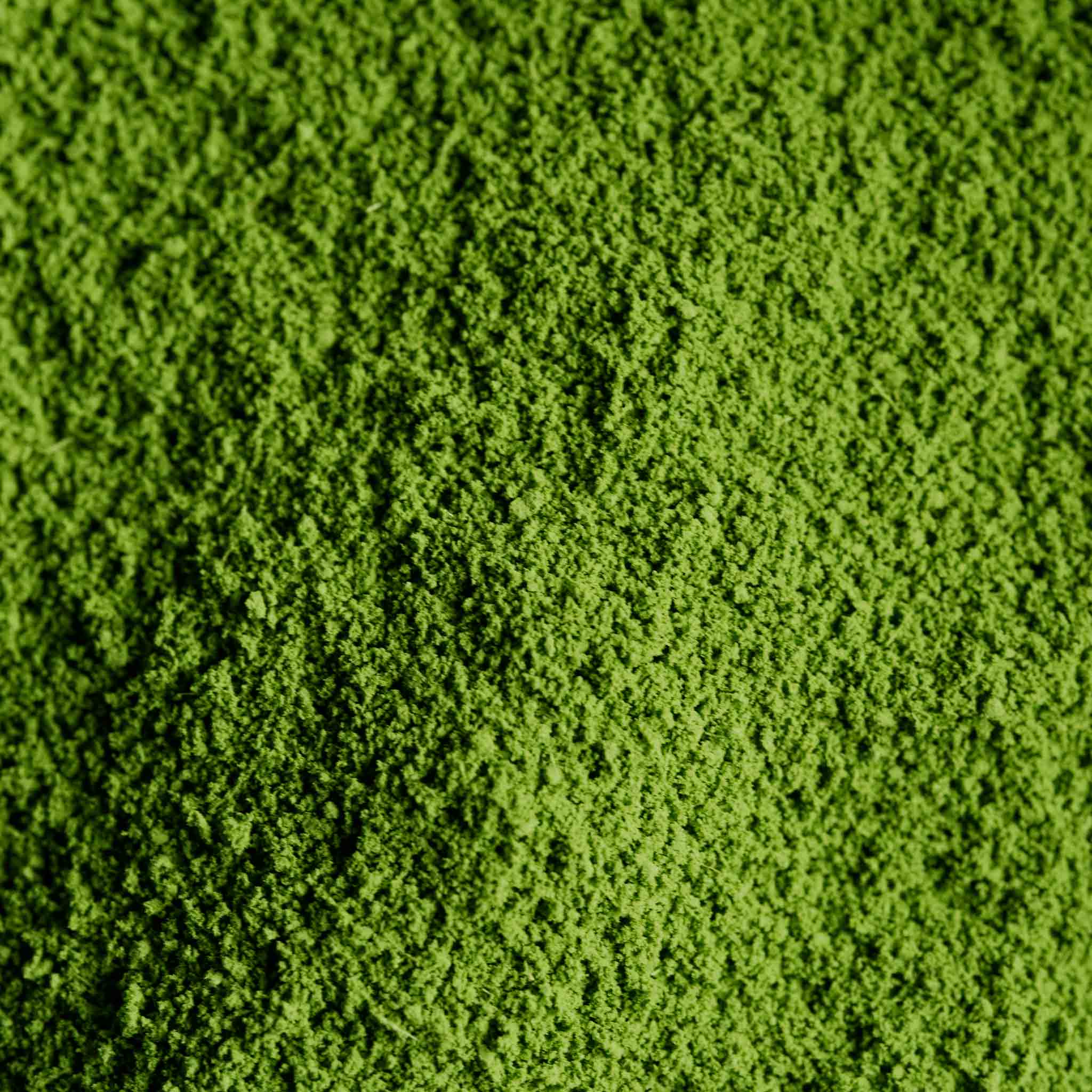Ceremonial Grade Matcha vs Culinary Grade Matcha
If you are reading this blog, we are assuming that you already know about Matcha tea ~ the world's favorite green tea of all Japanese green tea options. There's something about Matcha that strikes a chord with almost everyone. After all, a cup of Matcha is a cup of health, thanks to the many Matcha benefits.

But imagine going to shop for Matcha and being asked what grade you want? How do you decide, especially when matcha grades have a different taste and are created differently? Don't worry; we are here for you, not just with our premium quality Matcha tea but also with the right information about it.
Once you’ve chosen your ideal grade, it’s worth understanding the broader benefits of matcha tea so you can decide how often to bring it into your routine.
Here's all the 'tea,' quite literally!
Matcha Grades: A Quick Overview!
This vibrant, slightly savory green tea comes in three main grades. They are as follows:
Ceremonial Grade
This one is the best of the best. It is the drink of the monks, quite literally! Ceremonial-grade Matcha is used in tea ceremonies and Buddhist temples. As a result, it is the purest form of Matcha you will find.
Premium Grade
Also known as the traditional grade or the daily grade, this matcha grade is neither too bitter nor too sweet. It is the second purest form of Matcha and is perfect for dynamic use. Moreover, premium matcha is richly balanced with a clean, crisp aroma and smooth texture.
Culinary Grade
Then, there's the cooking-grade Matcha, as the name suggests. It is undoubtedly the chef's choice and is often found in the preparation of beverages, desserts, and supplements.
Now, let's get down to the detailed comparison!
In-Depth Comparison between Ceremonial vs Culinary Matcha
Leaf Source
The maturity of the leaves plays an important role in deciding the taste and quality of the tea.
Ceremonial grade of Matcha is harvested from the first flush of the double-cover shade-grown Camellia Sinensis plant. The young leaves are full of nutrients from the previous fall, protected from the harsh rays of the sun.
The 95% sun blockage during its growing period enhances the taste and quality of the Matcha. In fact, the ceremonial grade matcha has a very delicate, umami flavour that can be lost in all the cooking. Its limited availability due to selective harvesting makes the tea even more prized than it already is.
In contrast, culinary Matcha is made from the lower leaves of the plant. These leaves often come from the second, third, or even fourth harvest at times. As a result, they are sun-grown leaves boasting a bolder flavour. Since these leaves are exposed to the sun for a longer time, they are high in catechins. Its savoury edge makes it perfectly suitable for cooking and baking.
Processing
The processing of ceremonial grade and culinary grade begins with a careful selection of leaves. Beyond that, there is no similarity. Here's why.
Ceremonial grade is manufactured by following the traditional stone-grinding process called ishi-ushu. Think of stone mills rhythmically grinding the delicate younger leaves into fine ground powder. Mind you, when we say fine, we mean really, really fine. Of course, it is a slow and intensive process, but it also preserves the leaves' natural flavour.
After being stone-ground, the powdered Matcha undergoes meticulous filtering. The strict filtering removes all veins and stems for a smooth texture and smoother taste.
On the other hand, culinary Matcha undergoes stone milling methods but for a shorter period of time and at a rapid rate. This results in a larger particle size and coarser texture. Think of the coarser texture as a trade-off for efficiency.
Colour and Texture
When you think of Matcha, you start picturing a vibrant green brew. And that's exactly what the ceremonial grade looks like. The fine powder is a vibrant green in colour and has a silky texture because it is stone-ground meticulously. As a result, it is often associated with purity.
Unlike vibrant green colour, culinary grade matcha is a more subdued shade of green. It could range from bright green to a more dull shade. Plus, it has a coarser texture due to the larger particle size. Again, this is because of the shorter and rapid stone milling of the leaves.
Taste
Oh! The most important factor - taste. Matcha is synonymous with a unique umami flavour. But that's an umbrella term.
Ceremonial Matcha is umami in the sense that it has a subtle sweetness with a hint of spice. Plus, it has minimal bitterness, which makes it a really smooth brew, all thanks to the sun-blocked shading. What about the feel in the mouth? Oh, it is creamy and nice, making it the perfect start for the day.
However, when using Matcha for cooking and baking, you need a stronger, bolder flavour profile. Why? So that it does not get lost in the recipe and stands out. As a result, culinary Matcha has a bolder flavour, boasting a little bitterness and less sugary-sweet essence that pairs really well with recipes.
Of course, the harvest plays an important role here. Depending on whether the culinary Matcha was harvested from the second, third, or fourth harvest, its astringency and bitterness will differ.
Applications
Ceremonial Matcha is like the VIP of tea, especially in Japan. It's the star of a traditional Japanese tea ceremony called "chanoyu" or "sado." As a result, it has great significance. It is a symbol of harmony, respect, and enjoying a moment of calm.
The question is: "What kind of tea is served here?" Well, they serve two kinds. First, there is Koicha, which is thicker and more intense. It is denser, almost like a paste. Mind you, it is not the one you often see in pictures. What you see in the pictures is the Usucha. Unlike koicha, usucha is lighter and frothy. It has a layer of foam on its surface. Since these teas are prepared using just Matcha powder and water, the flavour is pure bliss.
On the other hand, there's the culinary grade. You can use it for baking, making lattes, making breakfast smoothies, and even making lip-smacking desserts. Not just that, you can also add it to savoury dishes for a unique twist. Here's a quick list of some Matcha-infused delights:
- Matcha latte
- Matcha cookies
- Matcha ice cream
- Matcha Hot Chocolate
- Matcha mochi
- Matcha noodles
- Matcha hummus
Does this mean you can’t use ceremonial grade matcha for cooking? No. You can absolutely use it. In fact, your desserts may even taste better with ceremonial grade than with culinary grade due to the balanced taste profile.
Things To Consider Before Deciding between Culinary and Ceremonial Matcha
Price
Let's talk about the elephant in the room: the price tag. Yes, ceremonial Matcha can be a bit pricey compared to its culinary counterpart. But here's the thing: you're paying for quality and craftsmanship.
Ceremonial Matcha undergoes a meticulous process, from shade-growing the tea leaves to traditional stone-grinding, resulting in a tea that's smooth, vibrant, and bursting with flavour.
Now, you might be thinking, "Is the ceremonial cost worth it?" YES! It is. If you're a tea enthusiast or you're planning a special occasion like a fancy tea party or a traditional Japanese tea ceremony, then ceremonial Matcha is definitely worth the splurge. After all, there is no better joy than tasting the purest Matcha!
As for the culinary grade matcha, it is comparatively cheaper but it tastes different too since it is made from the second or even the third harvest.
Availability
But what if it's hard to find ceremonial Matcha? Don't worry; many people experience ceremonial scarcity. Due to its selective harvesting and rigorous processing, ceremonial Matcha can be a bit hard to come by. But that shouldn’t stop you from drinking the purest Matcha tea.
ILEM JAPAN’s Matcha tea, is a ceremonial grade matcha tea with a fine 60-mesh texture. It is carefully cultivated under double cover and harvested from the first flush of the leaves. The result? A rich, vibrant green brew packed with goodness!
Culinary Matcha does not have the same pedigree as its ceremonial counterpart. Although it's readily available in various quantities, from small tins to bulk bags, the downside is its taste. Culinary Matcha has a stronger, bolder profile which may not be suitable for every consumption.
Personal Preference
At the end of the day, it all comes down to taste. Some people prefer the delicate flavours of ceremonial Matcha, while others enjoy the boldness of culinary Matcha. And that's okay! We all have our own unique tastes.
So here's our advice: experiment! Try both grades of Matcha and see which one tickles your fancy. Start with culinary Matcha for everyday use—it's affordable, versatile, and perfect for experimenting with new recipes. And when the occasion calls for something special, treat yourself to a tin of ceremonial Matcha and indulge in a moment of pure bliss.
Ceremonial Matcha vs Culinary Matcha: Which One is The Best?
Ceremonial Matcha, with its delicate flavours and meticulous processing, offers a sensory journey steeped in tradition. It has the upper hand with its rich umami flavour, first-harvest significance, and vibrant green colour.
On the other hand, culinary Matcha provides affordability and versatility, making it a staple in kitchens worldwide for both sweet and savoury creations. You can use it in many ways, and it's easy to include in your routine.

But amidst these differences, one thing remains constant: the benefits. Buy your cup of health today with ILEM JAPAN's Matcha Tea and get 1 absolutely free! Grab your sip of freshness today!










